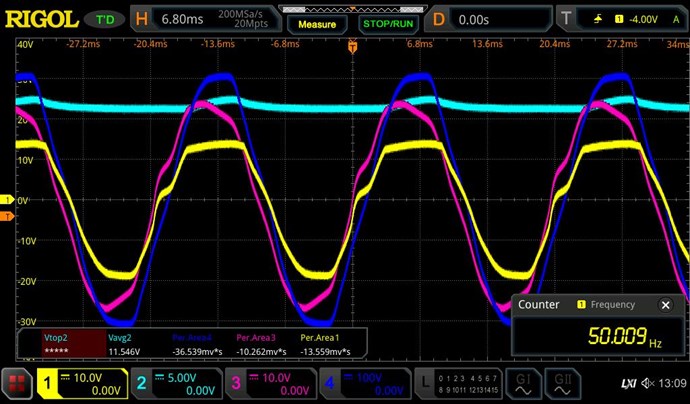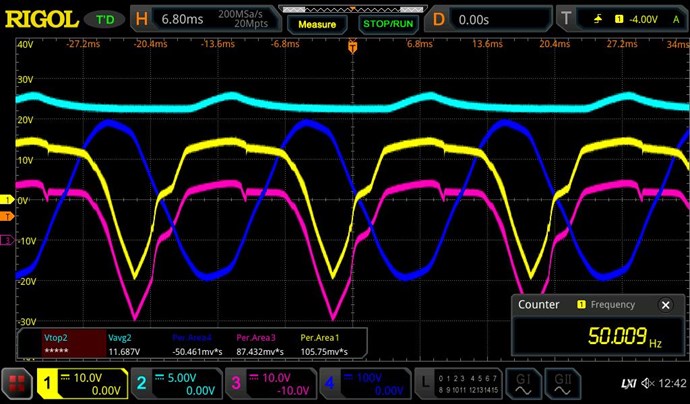Hello friends, this thread is intended to bring some clarity about the principals involved in the operation of different types of transformers. In first place I want to encourage all of you to think critically about some things widely accepted as theory, which has been told us by textbook physics so many times, that including most of trained engineers repeat them like parrots.
Let’s start with some very basic things, which I would like to show you in the following experiment:
The setup is very simple, a small ferrite transformer with one primary and one secondary winding. The ratio is a slight step-up of 1:1.2(not critical). An audio amplifier is used to produce the input for the primary winding. The scope is connected as follows: Ch1(blue) primary voltage, Ch2(green) secondary voltage, Ch3(red) primary current, Ch4(yellow) secondary current.
Here some images of the setup:
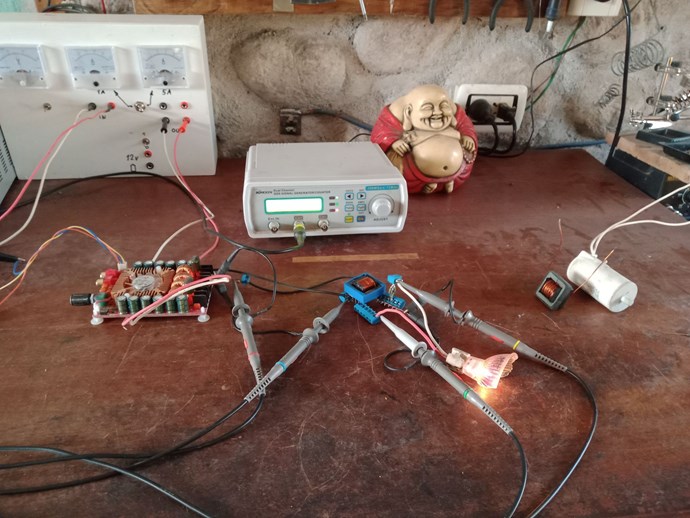
The transformer is observed in four different load conditions.
- No load, secondary open circuit.
- Inductive load, simulated with an additional inductor in series with a halogen lightbulb.
- Capacitive load, simulated with an AC capacitor in series with the lightbulb.
- Resistive load, the lightbulb only.
Let’s look at the scope shots in the first load condition:
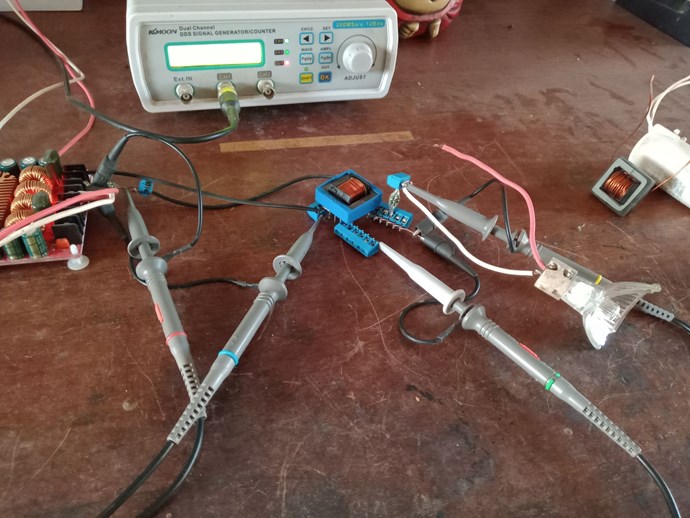
Unloaded, secondary open circuit.
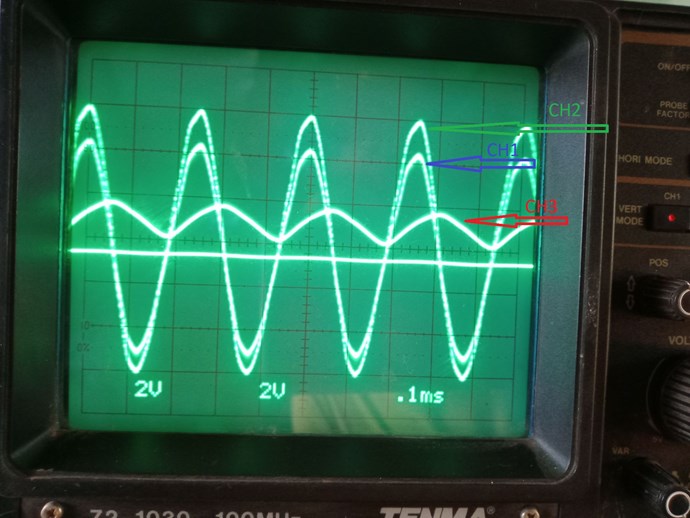
We can see that the primary and the secondary voltage are in phase, and also a small distortion is perfectly transmitted, the input current is reactive, close to 90° as expected from theory.
Now let’s see the following load condition:
An additional inductor is connected in series with the light bulb.
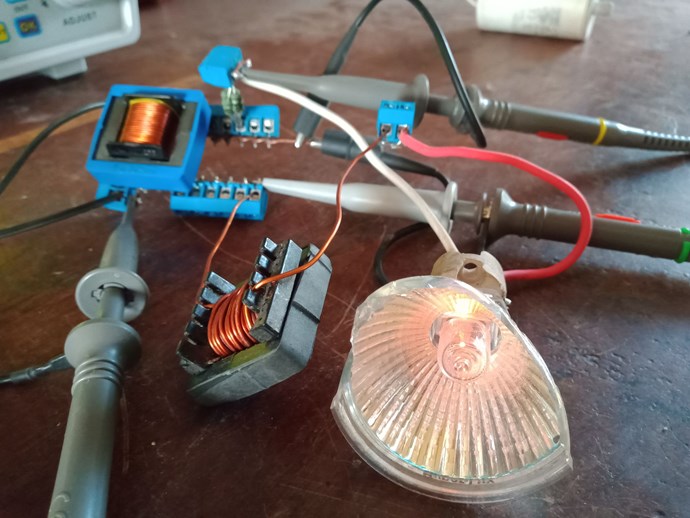
As the output becomes predominately reactive, only a faint growing is visible.
The scope traces:
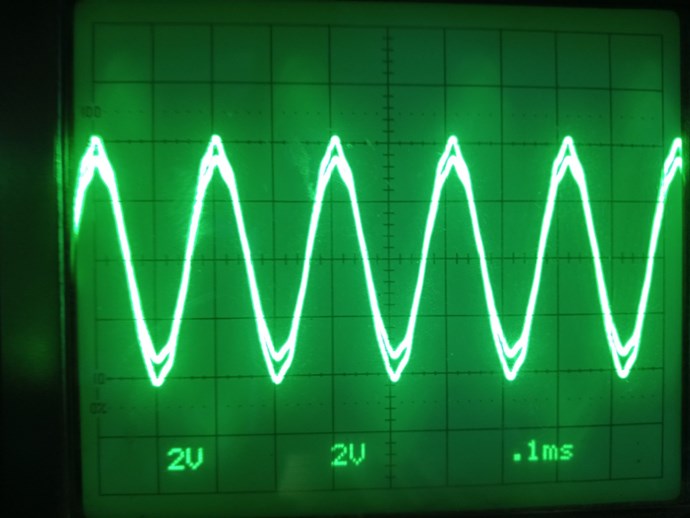
Primary and secondary voltage, perfectly in phase.
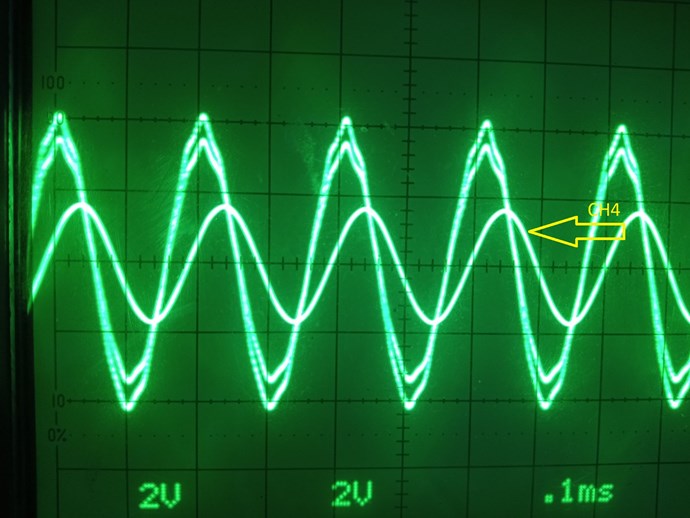
The secondary current is lagging behind the voltage, as expected for an inductive load.
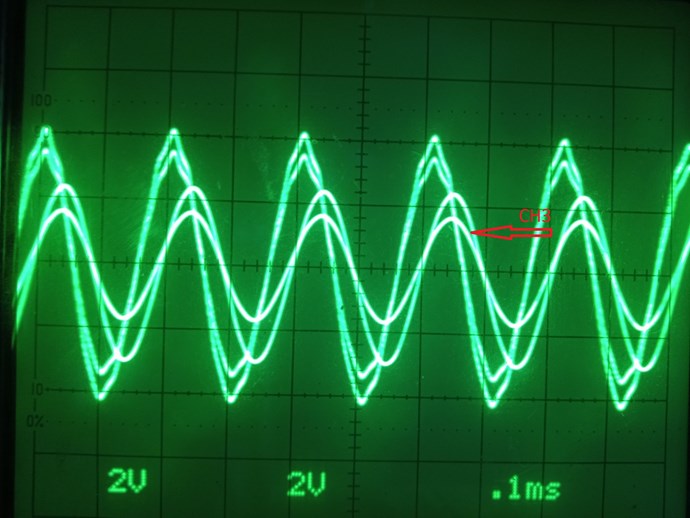
The primary current phase is also shifted to the lagging side.
Now let’s see what happens when we connect a capacitive load, we can simulate this by connecting an AC capacitor in series with the load:
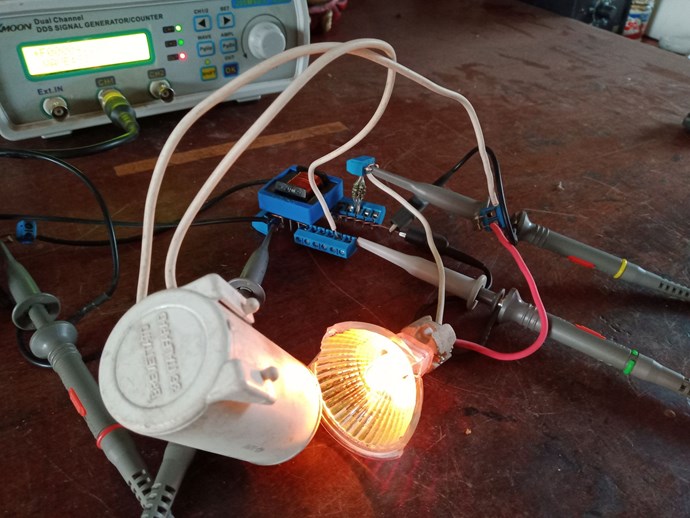
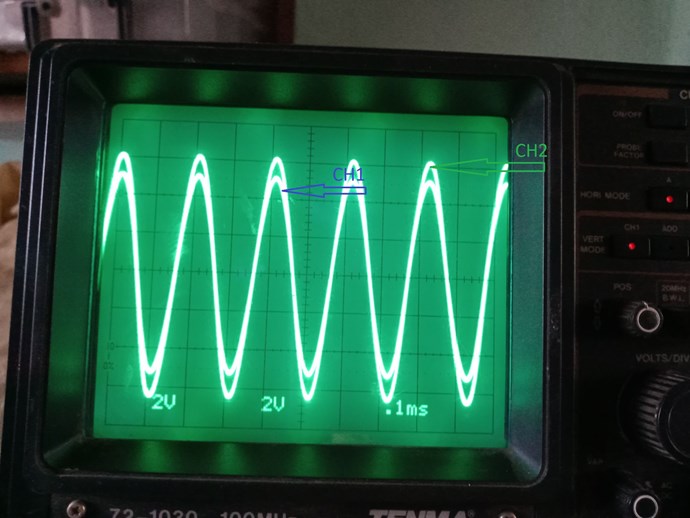
Again, the voltage of primary and secondary are perfectly in phase.
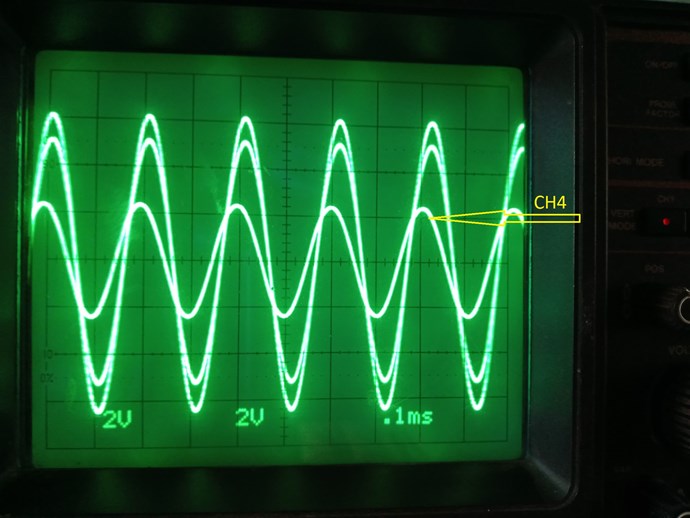
The secondary current is leading the voltage.
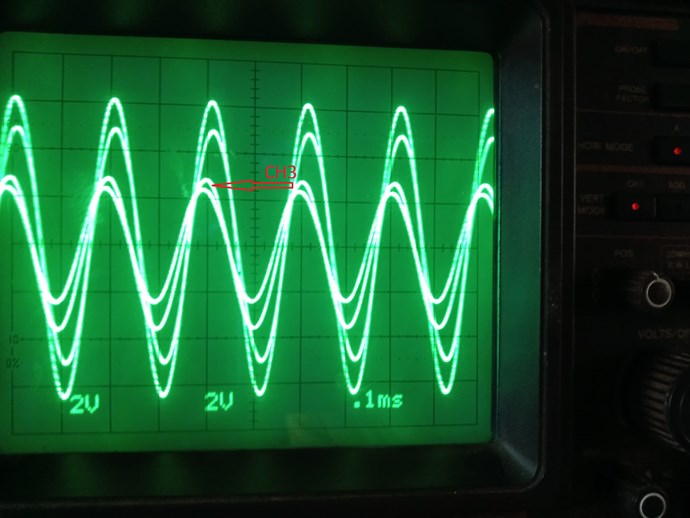
Also, the primary current is shifted to the leading side.
Now finally we will look at the traces with a resistive load connected:
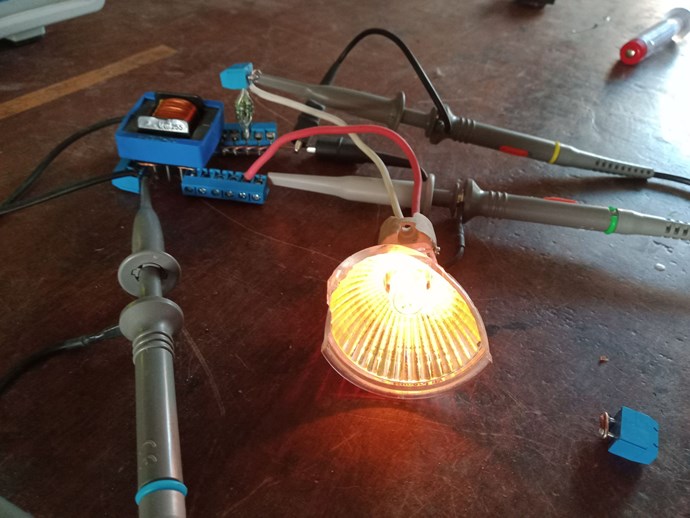
Secondary voltage and current:
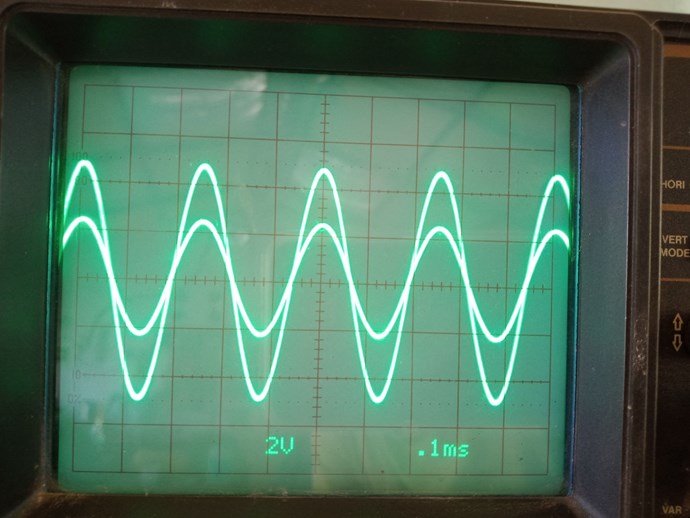
Primary voltage and current:
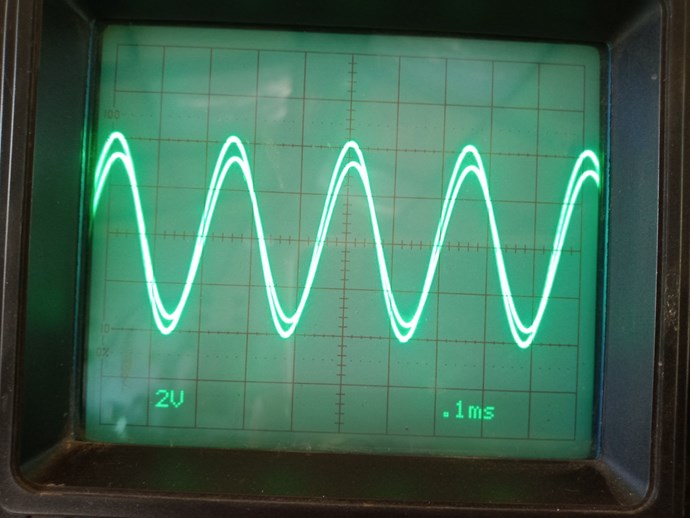
We can see a slight lagging of current; this depends on the amount of power extracted on the secondary side.
Finally all four traces superimposed, again we can see the voltages of primary and secondary exactly in phase:
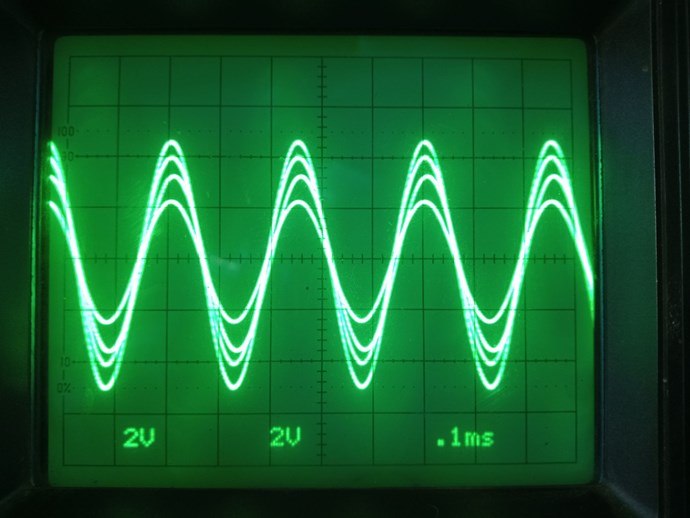
If we think about these results, we can make some conclusions for the instance. We see clearly that in all four load conditions the voltage on primary and secondary of the transformer are in phase.
But how is this possible, can anyone explain by using Faraday’s law of induction, how the voltage in the secondary winding is induced exactly in phase, while the currents are shifted to the leading or lagging side in different degrees?
And although with a predominately resistive load we have no change of current-magnetic flux at the moment of maximum voltage.
We can observe that the phase shifting on the secondary depends only on the reactance of the load (inductive or capacitive), and that this phase shifting is also reflected to the primary side.
So , if it is not the change in current which induces the EMF in the secondary, what is it then?
To be continued...
Vidura









